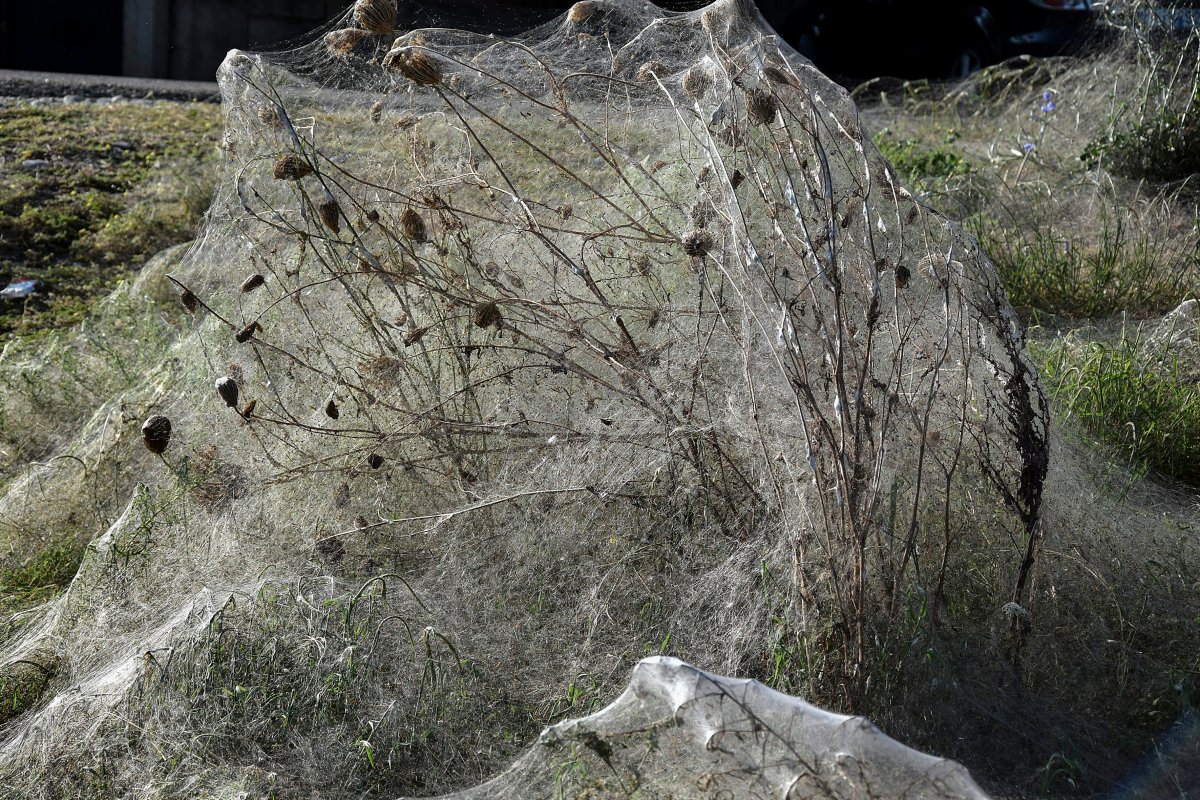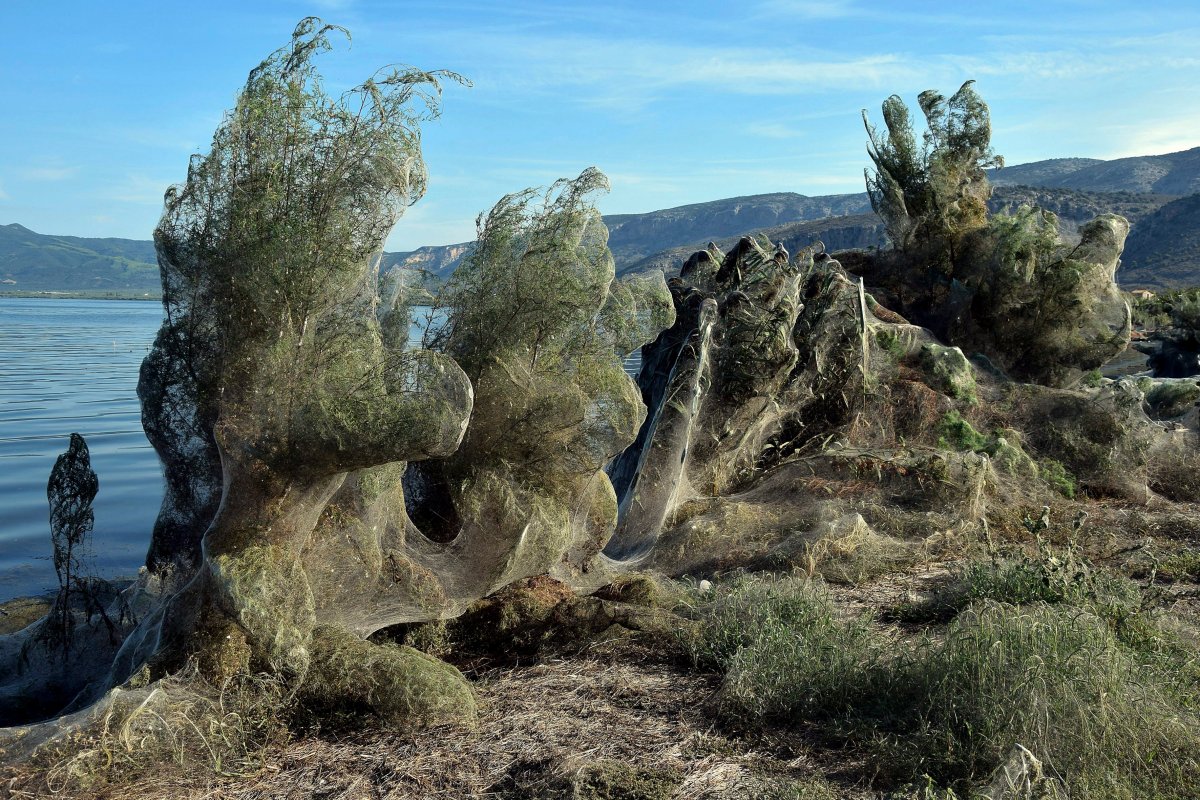Visitors to the town of Aitoliko in western Greece these days could be forgiven for feeling like J.R.R. Tolkien’s Frodo Baggins after he stumbled into Shelob’s lair in the second part of The Lord of the Rings.

They need not fear as he did — yes, spiders have woven a 300-metre web along the coastline, and there are thousands of them beneath it.
But these spiders don’t threaten humans — they’re just there to party, according to one professor.
Coverage of spiders on Globalnews.ca:
Tetragnatha spiders are known to build large webs so they can mate, BBC News reported.
Nevertheless, at least one resident in the area has never seen them so big, according to CNN.
“It’s natural for this area to have insects, no one is especially worried,” Giannis Giannakopoulos told the network.
“But I have never seen any spiderwebs this big in my life.”
Molecular biology professor Maria Chatzaki told Greek website Newsit.gr that higher temperatures, food and humidity have fostered conditions that have allowed the spiders to have plenty of offspring.
As translated by BBC, she said, “It’s as if the spiders are taking advantage of these conditions and are having a kind of a party.
- Ont. First Nation calls for chemical plant to be shut down amid ‘dangerously high’ benzene levels
- Ottawa looks to launch national flood insurance program within 12 months
- Ecuador rations power, declares emergency as drought limits hydro output
- Nova Scotia scraps spring bear hunt idea, public ‘very divided’ on issue
“They mate, they reproduce and provide a whole new generation.”
Chatzaki doesn’t expect that the spiders will harm plant life.
“The spiders will have their party and will soon die,” she said.
Giannakopoulos captured a video that showed the webs along Aikolito’s coastline.
Weather conditions in Aikolito have also allowed gnats to thrive — and they’re the favourite food of Tetragnatha spiders, Fotis Pergantis, a biologist and president of the Messolonghi National Lagoon Park, told CNN.
As gnats have grown in number, so too have they attracted the spiders’ attention.
“It’s the simple prey-predator phenomenon,” Pergantis said.
Here are some more photos of the giant spiders’ web in Aikolito:










Comments